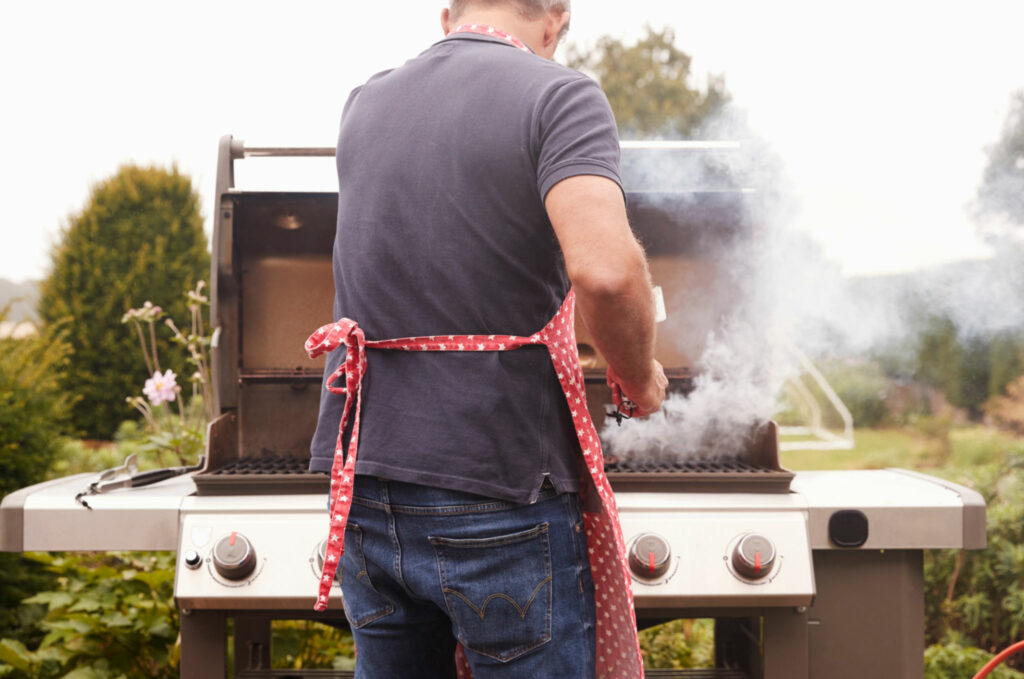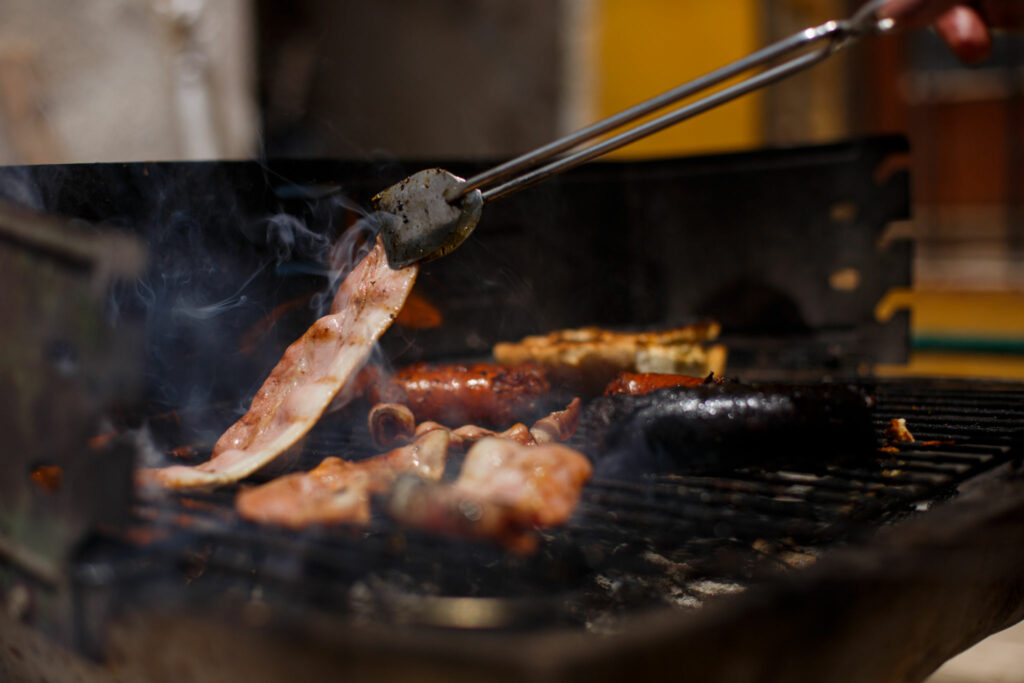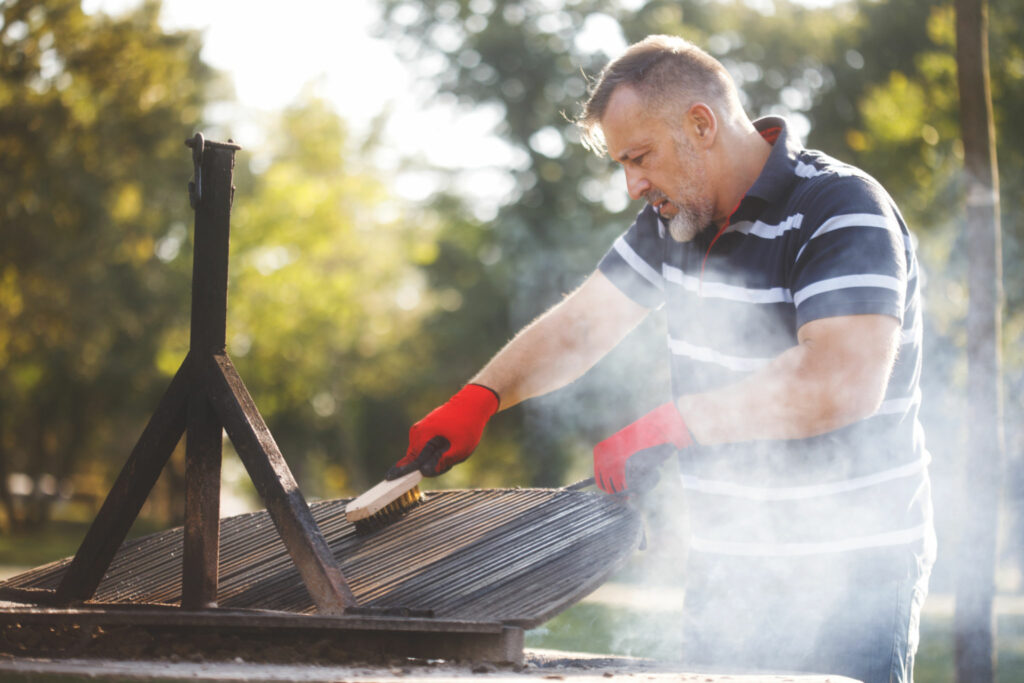There’s nothing like firing up the grill and enjoying a delicious meal outdoors with friends and family. But what do you do if your grill starts giving you trouble? Never fear, troubleshooting a grill is easier than you think! I’ll walk you through how to fix common grill problems. So pull out your tools and get ready to get grilling!
How To Identify Whether You’re Experiencing A Grill Problem?

If your grill isn’t working right, the first thing you need to do is identify what the problem is. Here are some common signs that something is wrong with your grill:
- The grill isn’t igniting
- There’s a low flame or the flame is sputtering
- The flame is uneven
- There’s a lot of smoke coming from the grill
If you notice any of these problems, don’t hesitate to troubleshoot your grill. By taking care of problems early, you can prevent them from becoming bigger issues down the road.
What Are The Most Common Grill Problems And How Do You Troubleshoot Them?

You may be surprised to learn that many grill problems can be easily fixed at home. The most common grill problems include:
1. Burners Not Working Properly.
Often, this is due to a clogged burner. Check your burner for any blockages and clear them away. You may also need to adjust the air shutter. This regulates the amount of oxygen that flows to the burner and can be turned with a screwdriver.
2. Gas Grill Not Getting Gas.
If your grill isn’t getting any gas, the first thing you should check is the regulator. The regulator controls the flow of gas to the grill and may need to be replaced if it’s not working properly. Make sure that all the valves are turned on and that there are no leaks in the gas lines.
3. Grill Keeps Going Out.
When your grill keeps going out, it could be due to a problem with the ignition system. Check that the batteries in your igniter are fresh and that all the connections are tight.
You may also need to clean or replace your igniter switch. In some cases, the problem may be with the gas line. Make sure that there are no leaks and that all the valves are turned on.
4. Low Flame On Gas Grill.
A low flame can be caused by a variety of factors, including a clogged burner, a dirty gas valve, or a problem with the regulator. First, try cleaning the burner. If that doesn’t work, you may need to adjust the gas valve or replace the regulator. It’s also a good idea to check for leaks in the gas line.
5. Natural Gas Grill Low Flame.
In a natural gas grill, a low flame can be caused by a leak in the gas line. Check all the connections for leaks and tighten them if necessary. You may also need to increase the flow of gas to the grill by turning up the pressure regulator. As always, be sure to check for any blockages in the burner.
6. Gas Grill Burner Adjustment.
If the flames are too high or too low, you may need to adjust the burners. Each burner has its own control knob that you can use to adjust the flame height. Start with the knob turned to the “low” setting and gradually turn it up until you get the desired flame height.
7. Grill Not Getting Hot Enough.
If the grill isn’t getting hot enough, there are a few things you can check. First, make sure that all the burners are turned on. Then, check the gas lines for leaks and tighten any loose connections. Finally, clean the burner ports to ensure that they’re not clogged.
8. Grates Rusting.
Rust is one of the most common problems with grill grates. If your grates are starting to rust, you’ll want to clean them with a wire brush and then apply a coat of vegetable oil. You should also make sure that you’re storing your grill in a dry, protected area when not in use. Here you can learn how to remove rust from cast iron grates.
9. Grease Buildup On Grates.
Grease and food can build up on your grill grates over time. This can cause problems with sticking and flaring. To clean your grates, scrape them with a wire brush and then wash them with soapy water. You should also make sure to clean your drip pan regularly.
Troubleshooting your grill doesn’t have to be difficult! By following these tips, you’ll be able to fix the most common grill problems quickly and easily. So get out there and enjoy the summer weather!
How To Clean The Grill Grates?

One of the most important parts of grill maintenance is keeping the grates clean. When you use your grill, grease and food particles can build up on the grates. This can cause problems with sticking and flaring. Below are some tips on how to clean a grill:
1. Use A Wire Brush.
A wire brush is the best tool for removing stuck-on food and grease. For best results, brush the grates while they’re still warm. All you need to do is run the brush back and forth across the grates until they’re clean.
2. Wash With Soapy Water.
After you’ve brushed the grates, wash them with hot, soapy water. In most cases, this will remove any lingering grease and food particles. As a general rule, you should wash your grates after each use.
3. Apply A Coat Of Vegetable Oil.
Once the grates are clean and dry, apply a light coat of vegetable oil. This will prevent rusting. On a gas grill, you can apply the oil to the grates while they’re still warm. For a charcoal grill, wait until the coals have cooled before applying the oil.
4. Store In A Dry, Protected Area.
When you’re not using your grill, be sure to store it in a dry, protected area. It’s a good idea to cover the grill or store it in a garage or shed. Also, be sure to remove the grates and clean them before storing.
By following these tips, you’ll be able to keep your grill grates clean and in good condition.
What Types Of Grills Are Available On The Market Today?
There are different types of grills available on the market today. Before you purchase a grill, you’ll need to decide what type of grill is right for you. Below are some of the most popular types of grills:
1. Gas Grills.
Gas grills are the most popular type of grill on the market today. They’re easy to use and they allow you to control the temperature of the grill. Gas grills can be powered by propane or natural gas.
2. Charcoal Grills.
Charcoal grills are another popular option. They’re great for those who enjoy the flavor that charcoal imparts on food. Charcoal grills can be a bit more difficult to use than gas grills, but many people feel that the flavor is worth the extra effort. Don’t skip this post on how to put out a charcoal grill (3 easy steps).
3. Electric Grills.
Electric grills are a good choice for those who don’t want to use gas or charcoal. They’re easy to use and they’re very convenient. However, electric grills can be expensive to operate and they don’t always provide the same flavor as gas or charcoal grills.
4. Portable Grills.
Portable grills are a good choice for those who want the convenience of being able to take their grill with them. Portable grills come in a variety of sizes and they can be powered by gas, charcoal, or electricity.
5. Built-In Grills.
Built-in grills are a popular choice for those who have the space for them. They’re permanent fixtures that are built into an outdoor kitchen or patio area. Built-in grills are usually powered by gas or charcoal.
Tips For Grilling Food Perfectly Every Time!

For perfectly grilled food, there are a few things you need to keep in mind. Now, let’s get started!
1. Choose The Right Meat.
For grilled meat, you’ll want to choose a cut that’s not too thick or too thin. The best cuts of meat for grilling are steak, chicken breast, pork chops, and fish fillets.
2. Season The Meat.
Before you start cooking, be sure to season the meat with salt, pepper, and any other desired spices. This will help to add flavor and prevent sticking.
3. Preheat The Grill.
It’s important to preheat the grill before adding the food. This will help to ensure that the food cooks evenly. For a gas grill, preheat to medium-high heat (around 375 degrees Fahrenheit). For a charcoal grill, let the coals burn until they’re covered in gray ash.
4. Oil The Grates.
To prevent sticking, be sure to oil the grates before adding the food. You can use a paper towel or brush to apply a light coat of oil.
5. Grill The Food.
Now it’s time to start grilling! For steak, chicken, and pork chops, cook for 4-6 minutes per side. For fish fillets, cook for 2-4 minutes per side.
6. Use A Meat Thermometer.
To ensure that your meat is cooked through, use a meat thermometer. Steak should be grilled to an internal temperature of 145 degrees Fahrenheit, chicken to 160 degrees Fahrenheit, pork chops to 145 degrees Fahrenheit, and fish fillets to 145 degrees Fahrenheit.
7. Let The Meat Rest.
After grilling, it’s important to let the meat rest for a few minutes before cutting into it. This will help to keep the juices from running out.
By following these tips, you can grill perfect steak, chicken, pork chops, and fish fillets every time! So fire up that grill and enjoy some delicious summertime cooking!
Conclusion
If you find yourself in the unfortunate position of needing to troubleshoot your grill, be sure to check out this guide on the most common problems and how to fix them. With a little bit of knowledge and some elbow grease, you should be able to get your grill up and running again in no time!
Have you ever had to troubleshoot your grill? What was the problem? Let me know in the comments below. Also, stay with GrillCharms for more tips on grilling, smoking, and barbecuing!
- The 9 Best BBQ Grills for Smoking Brisket - December 29, 2022
- 6 Mouth Watering Grilled Shrimp Recipes - September 16, 2022
- 6 Delicious Grilled Desserts - September 16, 2022

